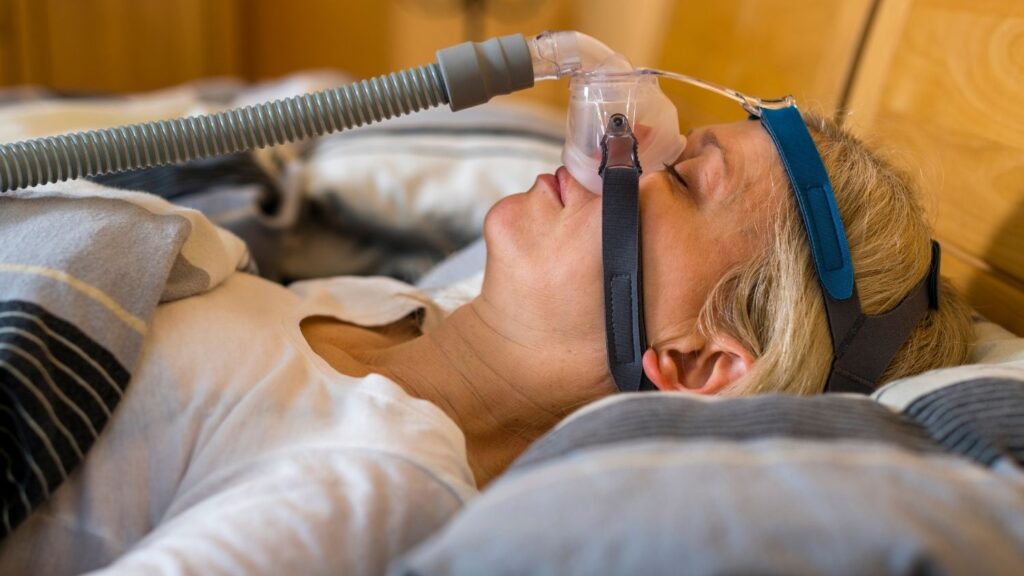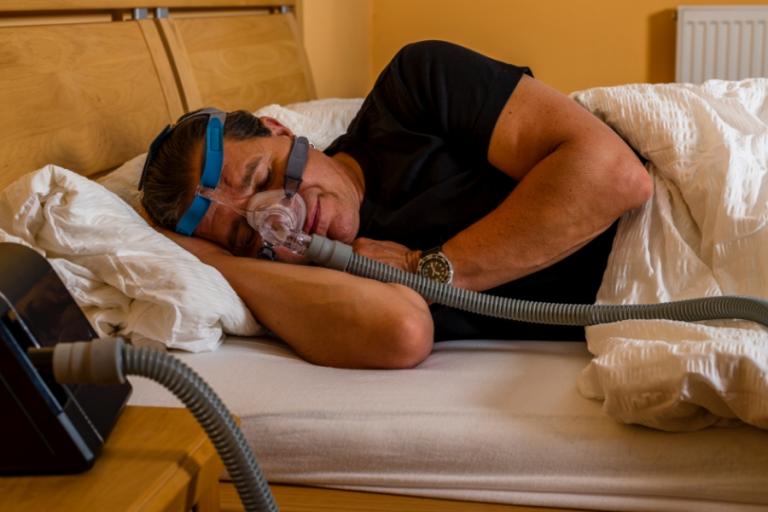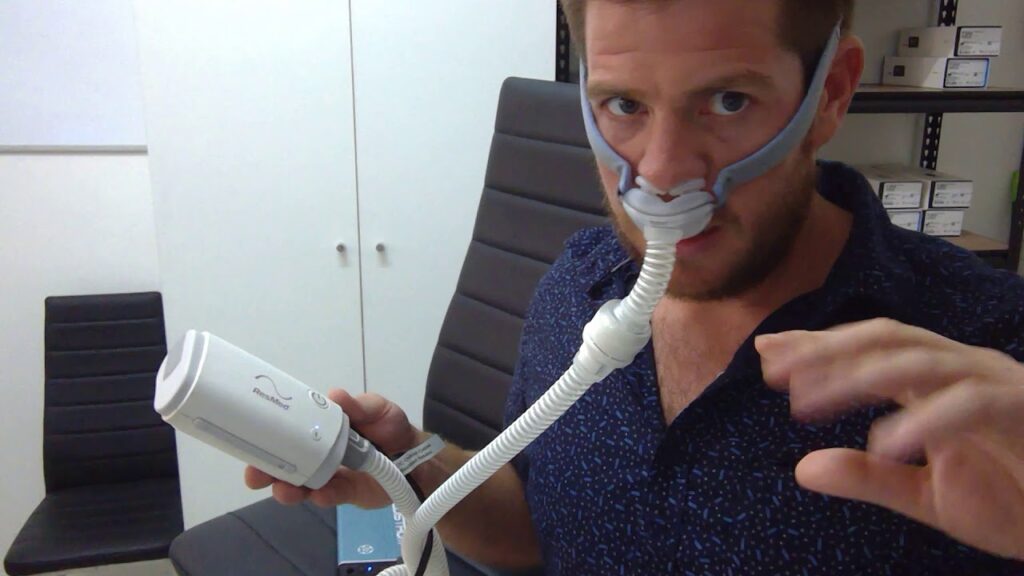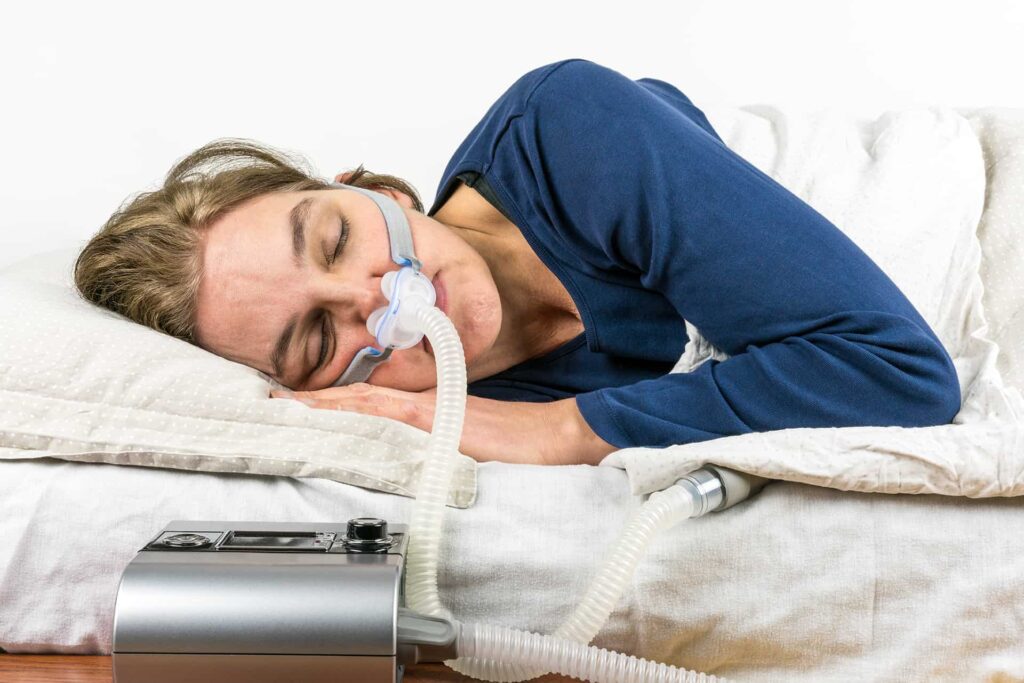CPAP machines, or Continuous Positive Airway Pressure machines, have revolutionized the treatment of respiratory health conditions, particularly sleep apnea. By delivering a steady stream of pressurized air, CPAP machines help keep the airways open and allow for uninterrupted breathing during sleep. This article aims to provide a comprehensive understanding of CPAP machines, their impact on sleep apnea, the benefits of home use, challenges associated with their use, and the future of CPAP therapy.
Understanding CPAP Machines
Sleep apnea is a common sleep disorder characterized by repeated pauses in breathing or shallow breathing during sleep. It affects millions of people worldwide and can have serious health consequences if left untreated. Fortunately, there is a solution – CPAP machines online.
CPAP stands for Continuous Positive Airway Pressure. These machines work by delivering a continuous flow of air through a mask worn over the nose or mouth, or both, providing a constant pressure that prevents the airways from collapsing. This ensures that the individual can breathe normally throughout the night, without any interruptions.
The Functionality of CPAP Machines
CPAP machines consist of a small motor that blows air into a tube, which is connected to a mask worn by the user. The mask may cover the nose, the mouth, or both, depending on the individual’s needs and comfort. The motor, controlled by a built-in computer, adjusts the airflow pressure to maintain an optimal level throughout the night, ensuring a consistent and effective treatment.

Additionally, modern CPAP machines often come equipped with various features, such as heated humidification, ramp settings, and data recording capabilities, which enhance user comfort and treatment efficacy. The heated humidification feature adds moisture to the air, preventing dryness and irritation in the airways. Ramp settings allow users to start with a lower pressure that gradually increases over time, helping them ease into the therapy. Data recording capabilities enable users and healthcare professionals to monitor treatment progress and make necessary adjustments. Click here to explore laser eye surgery in Sydney.
The Role of CPAP Machines in Respiratory Health
CPAP machines play a crucial role in the management and treatment of respiratory health conditions, primarily sleep apnea. By promoting uninterrupted breathing during sleep, CPAP therapy effectively reduces the risks associated with sleep apnea, including daytime fatigue, high blood pressure, and cardiovascular problems.
Moreover, CPAP machines have been found to improve cognitive function, mood, and overall quality of life in individuals with sleep apnea. The consistent and adequate oxygen supply provided by CPAP therapy allows the body to function optimally, leading to increased energy levels and improved mental clarity.
Furthermore, CPAP therapy has been shown to reduce the likelihood of related complications. Sleep apnea has been linked to an increased risk of stroke, heart attack, and other cardiovascular diseases. By treating sleep apnea with CPAP machines, individuals can significantly lower their risk of these life-threatening conditions.
In conclusion, CPAP machines are a vital tool in the management and treatment of sleep apnea and other respiratory health conditions. They provide a continuous flow of air, ensuring uninterrupted breathing during sleep and reducing the associated risks. With their advanced features and proven efficacy, CPAP machines have transformed the lives of countless individuals, allowing them to sleep better, breathe easier, and enjoy improved overall health and well-being.
The Impact of CPAP Machines on Sleep Apnea
Sleep apnea is a complex sleep disorder that can be classified into two main types: obstructive sleep apnea (OSA) and central sleep apnea (CSA). CPAP machines are effective in treating both types, addressing the specific underlying causes and improving breathing patterns during sleep.
Obstructive sleep apnea occurs when the airway becomes partially or fully blocked during sleep, leading to breathing difficulties and interruptions. This condition can have serious consequences, including daytime fatigue, increased risk of heart disease, and impaired cognitive function. However, CPAP machines have revolutionized the treatment of obstructive sleep apnea.
CPAP machines create and maintain positive pressure, preventing the collapse of the airways and promoting smooth breathing throughout the night. By resolving airway obstructions, CPAP therapy effectively eliminates snoring, reduces nighttime awakenings, and improves oxygen levels in the blood. This not only improves the quality of sleep but also enhances overall health and well-being.
Central sleep apnea, on the other hand, is characterized by the brain’s failure to transmit proper signals to the muscles that control breathing during sleep. While CPAP machines may not directly treat the underlying causes of central sleep apnea, they can help manage associated symptoms.
By providing a constant flow of air, CPAP machines stimulate the respiratory system, helping to regulate breathing patterns and reduce the frequency and severity of central sleep apnea episodes. This can lead to improved sleep quality and a reduction in daytime symptoms such as excessive daytime sleepiness and difficulty concentrating.
It is important to note that CPAP machines are not a cure for sleep apnea. They are a form of treatment that helps alleviate symptoms and improve sleep quality. It is essential for individuals with sleep apnea to consult with a healthcare professional to determine the most appropriate treatment plan, which may include the use of CPAP machines along with lifestyle modifications and other interventions.
In conclusion, CPAP machines have had a significant impact on the treatment of sleep apnea. They provide a non-invasive and effective way to manage the symptoms of both obstructive sleep apnea and central sleep apnea. By promoting proper breathing patterns during sleep, CPAP therapy can improve sleep quality, enhance overall health, and reduce the risk of complications associated with sleep apnea.
The Benefits of Home Use of CPAP Machines
One of the significant advantages of CPAP therapy is the ability to receive treatment in the comfort of one’s home. Home use of CPAP machines offers convenience, flexibility, and increased adherence to treatment, contributing to improved respiratory health.
Convenience and Comfort of Home Use
CPAP machines are compact, lightweight devices, making them easily portable and allowing users to maintain their treatment routine even while traveling. This means that individuals with sleep apnea can continue to receive the necessary therapy, ensuring uninterrupted treatment and better overall health. Moreover, the convenience of home use eliminates the need for regular visits to a sleep clinic, providing individuals with greater control over their healthcare journey and reducing the associated costs and inconveniences.

Imagine being able to sleep soundly in your own bed, with the gentle hum of the CPAP machine providing a steady flow of air to keep your airways open. No more uncomfortable nights in unfamiliar surroundings or worrying about forgetting to pack your equipment while traveling. With home use of CPAP machines, you can enjoy the comfort and familiarity of your own bedroom while still receiving the necessary treatment for your sleep apnea.
Monitoring and Adjusting Treatment at Home
Modern CPAP machines are often equipped with advanced monitoring and data recording features, enabling users to track their own therapy progress. By monitoring factors such as mask fit, air pressure, and usage patterns, individuals can identify and address any potential issues promptly. This self-monitoring capability empowers individuals to take an active role in their treatment and make informed decisions about their respiratory health.
Furthermore, the data recorded by CPAP machines can be remotely accessed by healthcare professionals, allowing for personalized treatment adjustments and ongoing support. This means that individuals no longer have to wait for their next appointment to discuss any concerns or make necessary changes to their therapy. With the ability to remotely monitor and adjust treatment, healthcare providers can provide timely guidance and ensure optimal treatment outcomes.
Imagine the peace of mind that comes with knowing that your healthcare team is closely monitoring your progress and can make adjustments to your treatment plan as needed. With home use of CPAP machines, you have the support and expertise of healthcare professionals right at your fingertips, ensuring that you receive the best possible care for your sleep apnea.
Overcoming Challenges with CPAP Machines
While CPAP therapy is highly effective, some individuals may face challenges during the initial adjustment period. However, with the right guidance and support, these challenges can be overcome, ensuring a successful and comfortable treatment experience.
CPAP therapy, or Continuous Positive Airway Pressure therapy, is a common treatment for sleep apnea. It involves wearing a mask that delivers a constant flow of air to keep the airway open during sleep. This helps to prevent pauses in breathing and improve overall sleep quality.
Addressing Common Side Effects
Some individuals may experience side effects such as nasal congestion, dry mouth, or skin irritation when starting CPAP therapy. These side effects are often temporary and can be minimized by using appropriate humidification, adjusting mask fit, or switching to alternative mask styles.
Nasal congestion is a common side effect that can occur when using a CPAP machine. This is because the constant flow of air can cause the nasal passages to dry out and become irritated. To alleviate this, using a heated humidifier can add moisture to the air, making it more comfortable to breathe. Additionally, using a saline nasal spray before bed can help to keep the nasal passages moist and reduce congestion.
Dry mouth is another side effect that some individuals may experience with CPAP therapy. This occurs when the air from the machine escapes through the mouth, causing dryness and discomfort. To address this, using a chin strap or a full-face mask can help to keep the mouth closed during sleep, preventing air leakage. Additionally, using a humidifier can also help to alleviate dry mouth by adding moisture to the air.
Skin irritation is a less common side effect, but it can occur when the mask rubs against the skin, causing redness, itching, or rashes. To prevent this, it is important to ensure that the mask is properly fitted and adjusted. Trying different mask styles or using mask liners can also help to reduce skin irritation. If the irritation persists, consulting with a healthcare professional is recommended to find a solution.

Tips for Adapting to CPAP Therapy
Adapting to CPAP therapy can take time, especially when incorporating it into a nightly routine. To ensure a smooth transition, it is recommended to establish a consistent bedtime routine, practice patience and persistence, and explore relaxation techniques to enhance comfort and facilitate better sleep.
Establishing a consistent bedtime routine can help signal to the body that it is time to sleep. This can include activities such as reading a book, taking a warm bath, or practicing relaxation exercises. Creating a calm and relaxing environment in the bedroom, such as using blackout curtains or white noise machines, can also aid in falling asleep more easily.
Practicing patience and persistence is key when adapting to CPAP therapy. It is important to remember that it may take time for the body to adjust to the new sleeping conditions. It is normal to experience some discomfort or difficulty initially, but with time and practice, it will become easier and more comfortable.
Exploring relaxation techniques can also help to enhance comfort and facilitate better sleep with CPAP therapy. Techniques such as deep breathing exercises, progressive muscle relaxation, or guided imagery can help to calm the mind and prepare the body for sleep. These techniques can be practiced before bed or even during CPAP therapy to promote relaxation and reduce any anxiety or stress associated with the treatment.
Additionally, connecting with support groups or online communities can provide valuable insights and tips from others who have successfully adapted to CPAP therapy. These communities can offer a sense of camaraderie and support, as well as provide a platform to share experiences and ask questions. Hearing from others who have overcome similar challenges can be encouraging and motivating, making the journey to successful CPAP therapy more manageable.
The Future of CPAP Machines
As technology continues to advance, the future of CPAP machines holds tremendous potential in improving respiratory health outcomes and enhancing overall treatment experiences.
Technological Advancements in CPAP Machines
Manufacturers are continually striving to develop innovative CPAP machines that are smaller, quieter, and more user-friendly. With advancements in materials and engineering, these machines aim to enhance portability and reduce noise levels, further improving user comfort and acceptance of treatment.
The Potential of Personalized CPAP Therapy
Personalized medicine is becoming increasingly prevalent, and CPAP therapy is no exception. The future of CPAP machines holds the promise of personalized treatment approaches, where individualized therapy plans, mask designs, and air pressure settings can be tailored to each patient’s unique needs and preferences. This individualized approach may further improve treatment outcomes and increase long-term treatment adherence.
In conclusion, CPAP machines have revolutionized respiratory health management, particularly in sleep apnea. By understanding the functionality, impact, benefits, and challenges associated with CPAP therapy, individuals can empower themselves to take control of their respiratory health journey and enjoy the transformative effects of CPAP machines in the comfort of their own homes.

